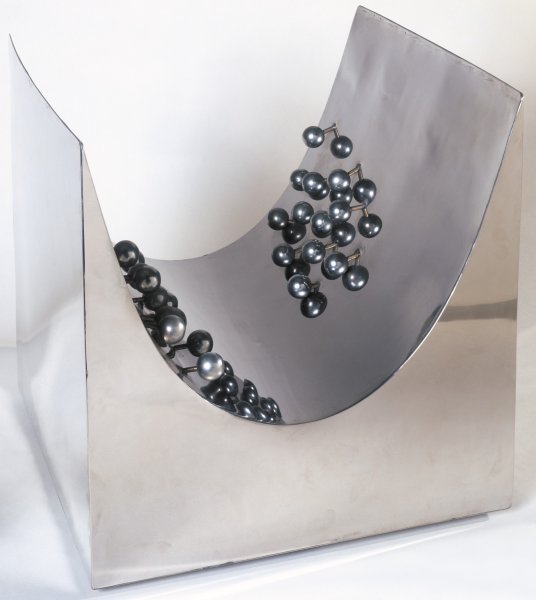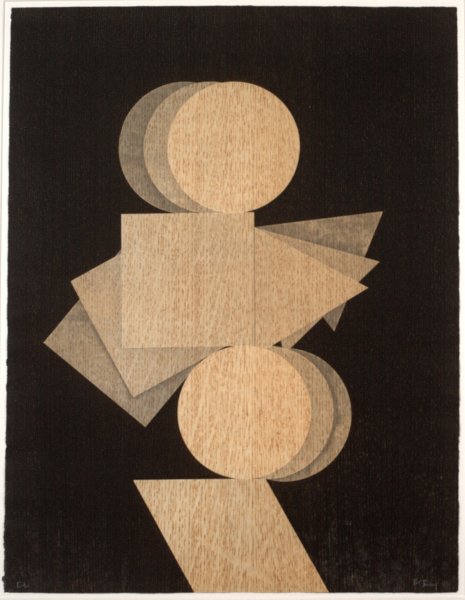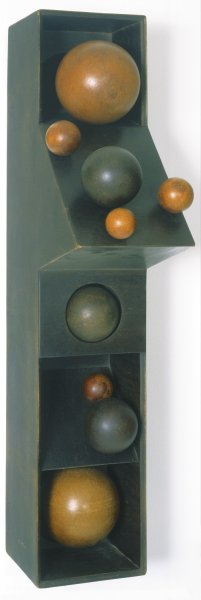Pol Bury
Belgian, 1922-2005
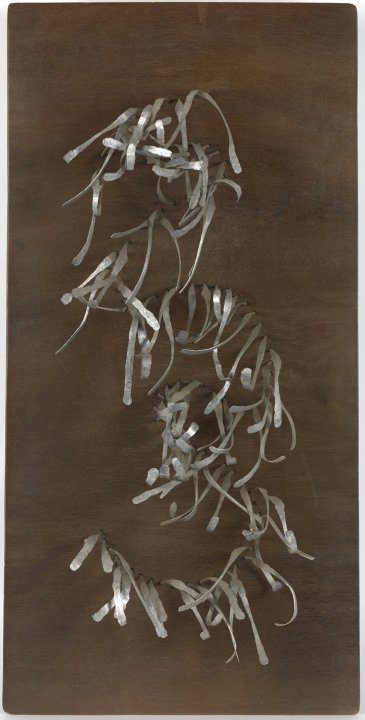
Erectile, 1963
Artwork Details
Materials
aluminum on wood panel, motorized relief
Measurements
overall: 39 1/8 x 19 3/8 x 11 1/2 inches (99.38 x 49.21 x 29.21 cm)
Collection Buffalo AKG Art Museum
Credit
Gift of Mrs. Nell E. Wendler and James S. Ely, Jr. in memory of our Mother, Nell Schoellkopf Ely Miller, 1995
Accession ID
1995:16.6
An early protagonist of Kinetic art, Pol Bury explored painting, drawing, and sculpture, as well as jewelry-making, public fountain commissions, and experimental film. Bury discovered his path only through successive encounters, influences, experiments, and failures. He was initially inspired by Surrealism, a movement whose practitioners sought to channel the creative potential of the unconscious mind. In 1952, however, the artist abandoned painting after discovering the work of Alexander Calder, whose mobiles, set in motion by air currents, were a revelation for Bury. He began making sculptures with parts that slowly twist, tilt, or spin. The finger-like aluminum tendrils that protrude from a wooden panel in this work are powered by a concealed motor—an element of surprise that is undoubtedly connected to Bury’s Surrealist roots. Their sluggish, fidgety stops and starts can have an unsettling effect, perhaps like something out of a science fiction narrative.
Label from Giant Steps: Artists and the 1960s, June 30–December 30, 2018
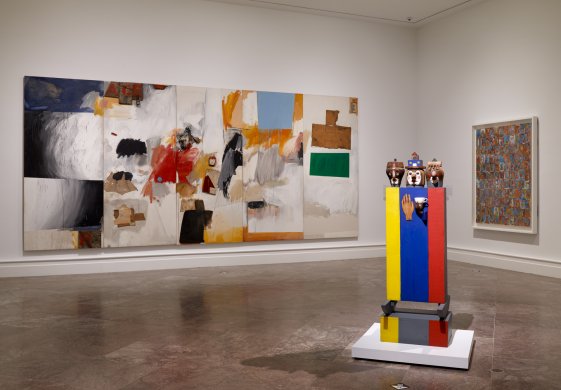
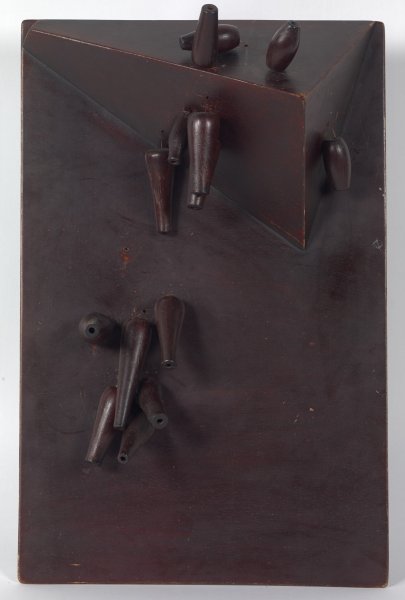
![[title unknown]](/sites/default/files/styles/callout_fixed_height/public/artwork/P2013_002_o2.jpg?itok=lsI7RTf3)
